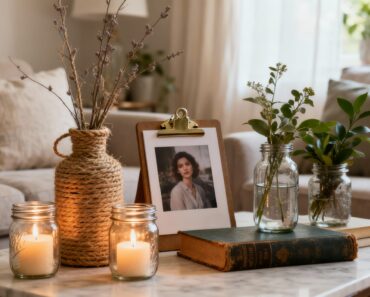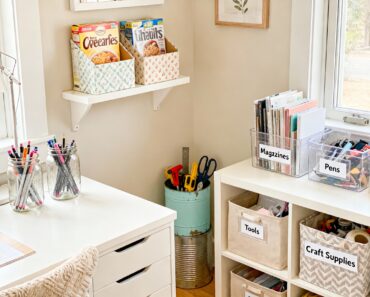Upcycling old furniture is not just a creative outlet—it’s a practical and sustainable way to refresh your living space without spending a fortune. By breathing new life into outdated or worn pieces, you reduce waste, contribute to a greener planet, and add unique touches to your home décor. Whether you’re a seasoned DIYer or trying upcycling for the first time, these five easy projects will inspire you to tackle old furniture with confidence.
Why Upcycle?
Before diving into projects, it’s worth understanding why upcycling is such a rewarding practice. Instead of discarding furniture that still has life left, you transform it into something functional and beautiful. Upcycling reduces your environmental footprint by diverting items from landfills. Plus, it allows you to express personal style through paint, fabric, finishes, and hardware changes. The best part—it often costs less than buying new.
The key is starting simple, gathering minimal supplies, and building skills gradually. Now, let’s explore five beginner-friendly upcycling projects you can start today.
1. Chalk Paint Makeover: Revive Old Dressers and Tables
One of the easiest and most popular ways to upcycle furniture is with chalk paint. It requires minimal sanding, no priming in many cases, and covers imperfections well.
What You’ll Need:
-
Chalk paint in your chosen color
-
A paintbrush or foam roller
-
Wax or clear topcoat for sealing
-
Sandpaper for light prep (optional)
Steps:
-
Clean the piece thoroughly to remove dust and dirt.
-
Lightly sand rough or glossy surfaces to help paint adhere.
-
Apply a thin, even coat of chalk paint and allow it to dry.
-
Add a second coat if necessary.
-
Seal your project with wax or a clear varnish for protection and added sheen.
Why This Works:
Chalk paint gives old wood a matte, vintage-inspired look. It’s forgiving for beginners and can be used on dressers, side tables, chairs, or cabinets. Change the hardware for a fresh look, and suddenly a dated piece becomes a statement item.
2. Decoupage Magic: Add Pattern and Texture
Decoupage involves adhering paper or fabric cutouts to the furniture’s surface and sealing it with a clear finish. This technique can transform plain tabless, drawers, or shelves into colorful, patterned focal points.
What You’ll Need:
-
Mod Podge or decoupage glue
-
Decorative paper, fabric, or even wallpaper scraps
-
Scissors
-
A foam brush or bristle brush
-
Clear sealant or varnish
Steps:
-
Choose your design and cut shapes or patterns to fit parts of the furniture.
-
Clean and lightly sand the surface.
-
Apply a thin layer of decoupage medium where you’ll place the paper/fabric.
-
Smooth the material onto the surface, working out bubbles.
-
Once dry, apply additional coats of sealant for durability.
Why This Works:
Decoupage lets you add intricate detail without paint skills. Use maps, vintage book pages, floral fabric, or anything that suits your style. It’s a fast way to personalize furniture, and mistakes are easy to fix by peeling off and reapplying.
3. New Hardware: Instant Style Update
Sometimes an old dresser or cabinet just needs a little sparkle. Swapping out knobs, handles, and pulls can instantly modernize a piece without any paint or tools beyond a screwdriver.
What You’ll Need:
-
New drawer pulls, knobs, or handles in your preferred style
-
Screwdriver
-
Measuring tape or ruler (to ensure holes line up)
Steps:
-
Remove existing hardware carefully.
-
Measure to confirm new hardware will fit or if new holes are needed.
-
Attach new items securely and evenly.
-
Clean or polish the rest of the piece to complement the new accents.
Why This Works:
Hardware is like jewelry for furniture. A sleek chrome pull can turn a vintage dresser into a contemporary focal point, or antique brass knobs can add charm to a modern piece. It’s cost-effective and doesn’t require sanding or painting.
4. Creative Leg Swaps: Elevate with Style
Changing or adding legs to furniture can dramatically alter its proportions and style while improving functionality by adding height or stability.
What You’ll Need:
-
New legs (hairpin, wood tapered, metal, etc.) adapted to furniture type
-
Screws and a drill or screwdriver
-
Measuring tape
-
Optional: paint or stain for legs or undercarriage
Steps:
-
Remove old legs or prepare the piece if it didn’t have any.
-
Measure and mark drill hole placements for the new legs.
-
Attach new legs firmly and test stability.
-
Paint or stain legs before or after attaching for a coordinated finish.
Why This Works:
Leg swaps take a low-profile item like a cabinet or sofa table to the next level. Hairpin legs bring a retro mid-century flair, while wooden tapered legs feel classic and elegant. It’s a relatively simple project that can revitalize almost any piece.
5. Fabric Refresh: Upholstery for Chairs and Ottomans
Upcycling extends to fabric surfaces. Reupholstering or adding slipcovers lets you introduce bold colors and prints, refresh worn-out seats, or give ottomans a new life.
What You’ll Need:
-
Upholstery fabric or heavy cotton in a pattern or color you love
-
Staple gun and staples
-
Screwdriver or wrench to remove seat cushions
-
Scissors
-
Batting or foam if padding needs replacing
Steps:
-
Remove cushions or fabric-covered panels carefully.
-
Take off staples or old fabric.
-
Replace padding if needed.
-
Cut new fabric with extra allowance.
-
Pull fabric taut over cushion and staple underneath, smoothing wrinkles.
-
Reattach cushions or panels securely.
Why This Works:
Fabric refreshes make a big visual impact, especially when paired with neutral painted frames. Use playful patterns to brighten a room or timeless textures like velvet for elegance. Reupholstery is a bit more involved but highly rewarding.
Tips for Successful Upcycling
-
Preparation is key: Clean and sand surfaces to get the best finish and adhesion.
-
Start small: Practice on minor pieces or accents before moving to larger projects.
-
Experiment freely: Combine painting, decoupage, and upholstery to customize.
-
Invest in quality materials: Good paint, brushes, and sealants provide durability.
-
Safety first: Work in well-ventilated areas and wear protective gear as needed.
-
Have fun: Upcycling is an art—there’s no one right way, so enjoy the process.
Conclusion
Upcycling old furniture doesn’t require a fully equipped workshop or advanced skills—it’s accessible to beginners and rewarding for experienced makers. From simple paint makeovers to swapping hardware and upholstery, these five projects prove anyone can transform old furniture into cherished, stylish pieces. By giving furniture a second life, you’re embracing sustainability and creativity, making your space unique while reducing waste. So dig out that worn dresser or old chair and turn it into an upcycled masterpiece!
- https://recycleforgreatermanchester.com/blog/beginners-guide-to-upcycling-furniture/
- https://www.georginaburnett.com/upcycling-beginners-guide/
- https://www.reclaimmagazine.uk/inspiration/culture-lifestyle/conscious-living/a-beginners-guide-to-easy-furniture-upcycles/
- https://upcyclethat.com/quick-upcycling-projects/
- https://www.cfrcltd.org.uk/beginner-friendly-upcycling/
- https://www.placesforpeople.co.uk/helpful-guides-tips/my-place-blog/upcycling-wooden-furniture-for-beginners/
- https://www.youtube.com/watch?v=AftUEmHwMaA
- https://www.myrepurposedlife.com/250-repurposed-projects/
- https://www.domestika.org/en/courses/1982-creative-furniture-upcycling-for-beginners/final_project_lessons



